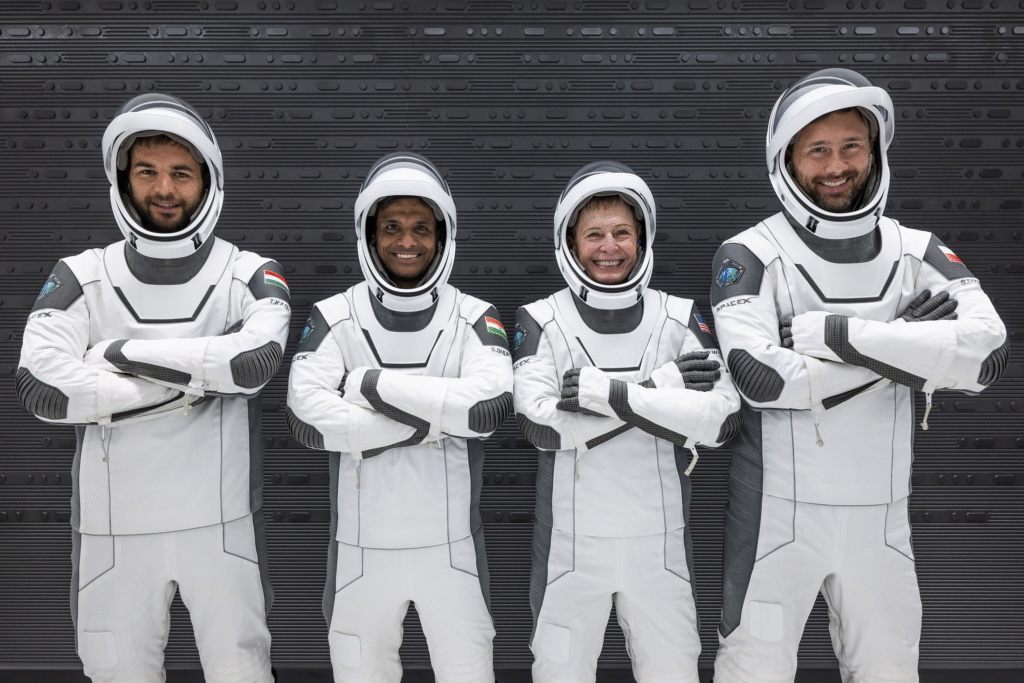India marks a historic leap from Rakesh Sharma’s 1984 Soviet space mission to Shubhanshu Shukla’s 2025 SpaceX flight, reflecting advances in technology and global partnerships.
India is preparing to script yet another milestone in space exploration, nearly 41 years after Wing Commander Rakesh Sharma etched his name in history as the first Indian to venture into space. In June 2025, Group Captain Shubhanshu Shukla will take off for the International Space Station (ISS) aboard the American Falcon-9 rocket, representing not just a leap in technology, but a shift in India’s geopolitical and strategic alignments. While both astronauts share the same Indian Air Force pedigree, their journeys reveal how much the world—and India’s position in it—has transformed.

A Historic Mission Amidst Cold War Dynamics
Rakesh Sharma’s 1984 mission was launched in the thick of the Cold War. Flying aboard the Soviet Soyuz rocket to the Salyut-7 space station, Sharma’s journey was as much a symbol of Indo-Soviet camaraderie as it was about space science. That era marked the peak of India-Russia defense relations, with the Indian Armed Forces relying heavily on Soviet technology, including fighter jets, transport planes, and naval assets.
Fast forward to 2025, and Group Captain Shukla’s mission is a powerful reflection of India’s growing strategic ties with the United States and other Western powers. Shukla will be part of the Axion-4 mission, joined by astronauts from the US, Poland, and Hungary, aboard a cutting-edge reusable Falcon-9 rocket by SpaceX—a stark contrast to the expendable Soviet Soyuz. His spacecraft, Dragon C-213, will ferry the crew both to and from the ISS, orbiting 400 km above Earth—higher than Salyut-7’s orbit of 219-278 km.
The differences don’t stop there. Sharma’s mission focused on Earth observation and experiments in bio-medicine under microgravity. In contrast, Shukla’s 14-day expedition encompasses a far more complex set of scientific goals: exploring human-computer interaction in space, examining genetics and metabolism in microalgae and cyanobacteria, studying muscle dysfunction therapies, and even analyzing crop seed germination in zero-gravity environments.
Despite these contrasts, there are striking similarities. Both Sharma and Shukla are test pilots from the IAF, selected after rigorous screening and trained abroad to meet international astronaut standards. They embody the finest in India’s aerospace capability, carrying the aspirations of over a billion people beyond Earth’s atmosphere.
Since Sharma’s time, India’s space program has matured remarkably. The Indian Space Research Organisation (ISRO) has moved from modest beginnings to becoming a global force in space science and satellite launches. From placing a spacecraft on the Moon to planning human spaceflight and Mars exploration, ISRO now commands global respect and commercial partnerships.
The geopolitical shift is equally stark. The Soviet Union that once hosted Sharma’s mission disintegrated in 1991, giving way to Russia, which remains a strong defense partner. Yet, India’s expanding military procurement from the US, including C-17s, Apache helicopters, and surveillance aircraft, highlights a new axis of collaboration. Multilateral engagements like the Quad and joint military drills with the US were unthinkable during Sharma’s mission—today, they are the norm.
In every sense, Group Captain Shukla’s mission is a continuation of the legacy started by Rakesh Sharma but upgraded to match today’s dynamic and multipolar world. It reflects not only how far India has come in space technology but how the nation now plays a pivotal role in global diplomacy, defense, and scientific research. The stars remain the same, but India’s journey to reach them tells a whole new story.
